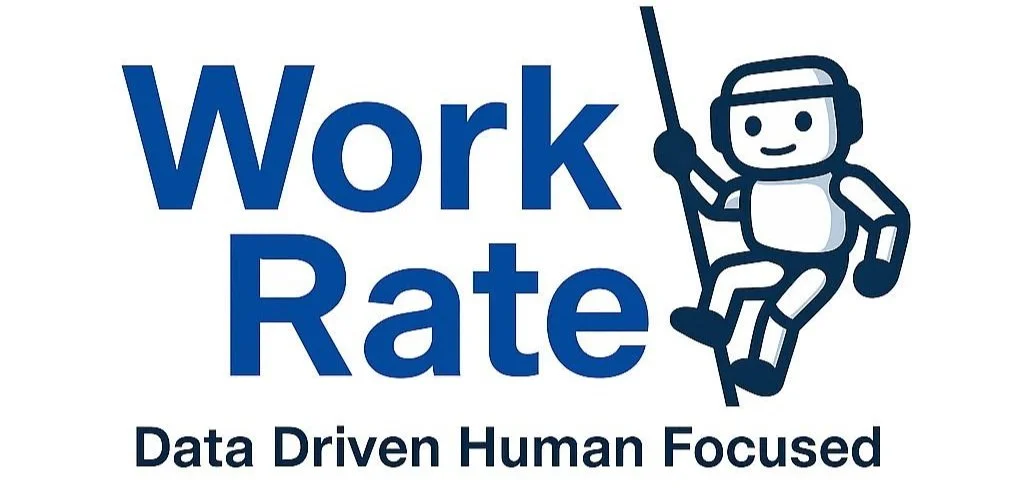
Investor pitch
Concept
Work rate is an AI programme that pairs with smart glasses to determine the amount of work done, allowing employers to pay their employees based on their input
The AI system uses standardized tools, such as a Wagtail squeegee, as a reference object to estimate window dimensions and calculate the area cleaned. It automatically detects when a task is completed and assigns a quality score out of 100% based on factors such as coverage, streak detection, and efficiency.
For Employers
Implementing a work rate-based pay structure gives you powerful insight into how your company operates when you’re not physically present. It allows you to accurately monitor performance, identify high-performing employees, and reward talent, while also exposing inefficiencies or underperformance that may be costing your business.
This system naturally motivates employees to improve their productivity, enabling your team to complete more projects in less time, ultimately increasing your annual revenue. It also allows for precise expense forecasting. Instead of guessing labour costs, you can quote jobs based on measurable units like square meters cleaned. This makes wage costs predictable and ensures you’re not paying for idle time.
For Employees
A work rate pay structure puts control in your hands. Your earnings are directly tied to your output, not your time on-site. This means you decide how much you earn each day through your effort and efficiency.
If you’re someone who consistently goes above and beyond or picks up the slack for others, you’ll be fairly compensated for the work you actually do, not just the hours you’re present. It creates a fairer, performance-driven environment where your income reflects your ability, initiative, and contribution to the team.
why use work rate
The companion app game/ fitness tracker design is built to improve productivity and job satisfaction. Gamification drives engagement and habit formation by triggering dopamine through elements like points, scores, and badges, which activate the brain’s reward system and reinforce behavior in a game-like manner. It creates effective feedback loops, where instant rewards such as quality scores or real-time earnings updates encourage users to repeat positive actions.
Psychologically, it satisfies core human needs for competence, autonomy, and recognition. Techniques like streaks increase commitment by leveraging loss aversion, while achievements offer status and a sense of progress.
Real-time performance metrics further enhance motivation by giving users a sense of control and accomplishment. These principles are widely used in fitness and productivity apps such as Fitbit, Duolingo, Habitica, and Todoist, where gamified features like leaderboards, badges, and streak counters help users stay consistent and engaged with their daily goals.
The use of sound effects like a “cha-ching” in video games or apps reinforces reward feedback by creating an immediate auditory cue linked to success, which strengthens the dopamine response and makes the action feel more satisfying and memorable.
gameification
the business model
The business will operate as a Software-as-a-Service (SaaS) platform under a subscription model. Clients will pay a base subscription fee of $149 per month, which includes access to the full suite of features and support for up to three technicians. For teams with more than three technicians, an additional $50 per month per technician will be charged.
As part of the initial subscription, the business will provide three smart glasses at no additional cost, enabling clients to get started with minimal upfront investment. For any additional technicians beyond the first three, companies will be required to purchase additional smart glasses separately through our platform or approved hardware partners.
This model ensures scalability and predictable monthly costs for businesses, while also generating recurring revenue and allowing for high customer retention through integrated hardware and software usage.
With over 400 rope access window cleaning companies operating across Australia, the market represents a strong and growing opportunity for scalable SaaS solutions tailored to this niche. Even a 5% market penetration would represent 20+ high-value clients, each potentially generating $5,000–$10,000 annually.
With an estimated 50,000 active window cleaning businesses worldwide, and considering that a subset specializes in rope access services, targeting even a fraction of this market could be lucrative.
I also believe that the software has the potential to expand into many different manual labor industries such as brick-laying, painting and hotel room cleaning, expanding the market potential even further.


